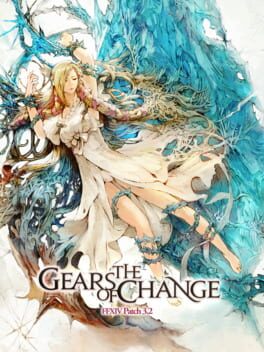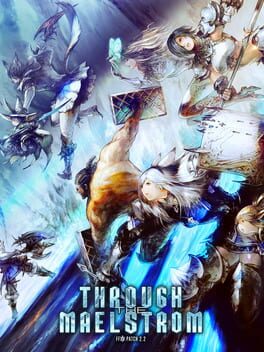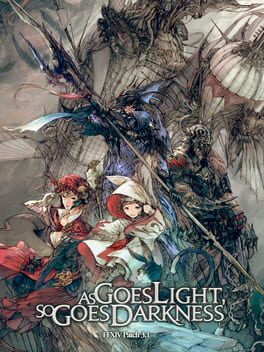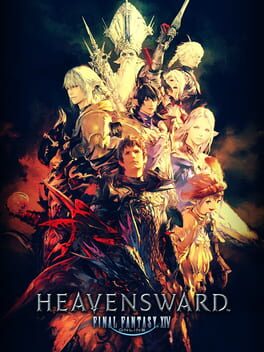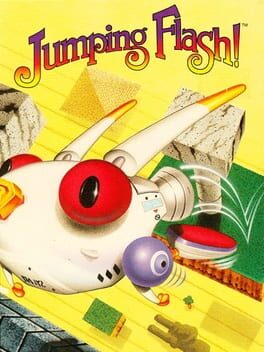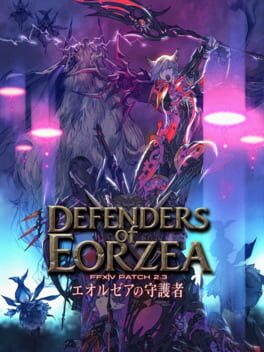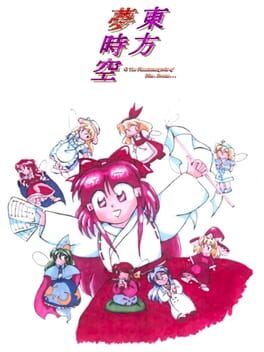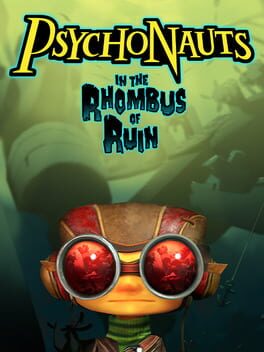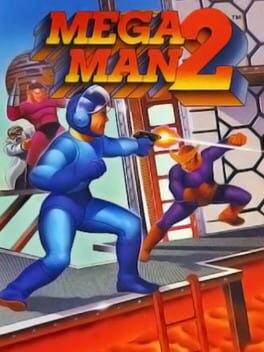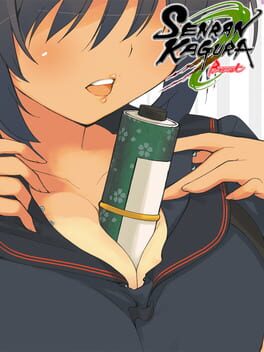SwitSwat
BACKER
This review contains spoilers
While this patch does feel more narratively focused than the last, with its final moments tying back into the cliffhanger that was set up at the end of HW proper, there was not as much shock value here as the last patch. Hell, Minfilia's death(?) was so anticlimactic that I just rolled my eyes. And the "melee" tournament was honestly not as interesting as I expected.
Still, there's plenty that this patch does to keep the story rolling along, with Nidhogg's rude interruption of the peace conference being quite memorable. The Antitower was also a really solid dungeon, with its final boss taking the form of a giant demonic baby doll come to life; certainly, an image I will not soon forget.
The best scene? Emmanellain getting completely socked in the face by Thancred.
Still, there's plenty that this patch does to keep the story rolling along, with Nidhogg's rude interruption of the peace conference being quite memorable. The Antitower was also a really solid dungeon, with its final boss taking the form of a giant demonic baby doll come to life; certainly, an image I will not soon forget.
The best scene? Emmanellain getting completely socked in the face by Thancred.
This review contains spoilers
Wait, racism is bad? Wow, who knew? Patch 2.2 continues to serve as more set-up, but this time with a larger focus on compelling storytelling (actual voiced cutscenes, hooray!). Yugiri seems like an interesting character, and it's funny that I just so happened to unlock Ninja during this time, as its quest line makes mentions of Yugiri and Doma as a whole (it is their fighting style, afterall). I can't say that I'm too invested in the Ascians subplot, yet. As of right now, they're just giving me Organization XIII vibes, but without the personality.
Leviathan made for a cool trial boss, despite our party getting wiped on the first attempt. I'm starting to wonder how anyone is supposed to figure out these attack patterns without any explanation or multiple re-attempts. I didn't even notice the tail on Leviathan until someone pointed it out to me. Maybe I should tamper with my lock-on settings again. But I digress; I'm a sprout, and this is mainly a skill issue. I'll get there.
And oh boy, I got chills when Teledji stared at the camera and said: "Revolution..." I honestly did not see his role as a villain coming.
Leviathan made for a cool trial boss, despite our party getting wiped on the first attempt. I'm starting to wonder how anyone is supposed to figure out these attack patterns without any explanation or multiple re-attempts. I didn't even notice the tail on Leviathan until someone pointed it out to me. Maybe I should tamper with my lock-on settings again. But I digress; I'm a sprout, and this is mainly a skill issue. I'll get there.
And oh boy, I got chills when Teledji stared at the camera and said: "Revolution..." I honestly did not see his role as a villain coming.
This review contains spoilers
I'm starting to think there's some sort of conspiracy to gaslight new players into thinking that post-game patches are all mostly underwhelming. Seeing as how 2.1 was a fairly uneventful and slow patch, I expected the same trend moving forward, in that, at the very least, the x.1 patches would be more filler than anything of major substance. But how glad I was to be wrong. I'm just as surprised to see a general consensus among the reviews here that this is apparently mid. Couldn't be me!
Here we see the ramifications of the archbishop's death and of the people finding out the truth about the Dragonsong War, culminating in an uprising within the Holy See that made for some truly tense, nail-biting moments. After base Heavensward taught me suffering, I figured anyone is fair game to welcome death at this point, but I'm glad it did not come to that... this time.
Thancred's return is a welcome one, but a bit anticlimactic, I will say. If anything, the introduction of the Warriors of Darkness kind of overshadowed the reunion, and it's wild that that they're already trying to get me excited for Shadowbringers when I haven't even gotten to Stormblood yet.
Other important things to note:
- Alphinaud is a horndog. Poor lad just can't catch a break.
- Krile is a good potato.
Here we see the ramifications of the archbishop's death and of the people finding out the truth about the Dragonsong War, culminating in an uprising within the Holy See that made for some truly tense, nail-biting moments. After base Heavensward taught me suffering, I figured anyone is fair game to welcome death at this point, but I'm glad it did not come to that... this time.
Thancred's return is a welcome one, but a bit anticlimactic, I will say. If anything, the introduction of the Warriors of Darkness kind of overshadowed the reunion, and it's wild that that they're already trying to get me excited for Shadowbringers when I haven't even gotten to Stormblood yet.
Other important things to note:
- Alphinaud is a horndog. Poor lad just can't catch a break.
- Krile is a good potato.
Dragons, Dragoons, and Deceit... Oh My...
For the longest time, Heavensward was a name that held this air of mystery to it. It sounded elegant and enticing, but also seemed so out of reach (hah, get it?), for even years before I properly attempted to get into FF14, I was aware that this first expansion is where a lot of the community promised the game would get good. And look, I liked ARR. Sure, it was very slow at times, but it had some genuinely good story beats and did a good enough job at introducing the world of Eorzea and its gameplay mechanics. Of course, I still had those higher expectations going into HW, but a lot of people were hyping it up as a 10/10 masterpiece, and I guess if you didn't like ARR, it very well could be, but that wasn't the case for me.
But hey, for what it's worth, HW is definitely a strong improvement over ARR, with much better pacing, a more intriguing story, stronger character moments, and less filler quests (though, in an MMO, that's still going to be a thing). And I'll be honest, despite this first expansion being more interesting from the get-go, it still took me quite a while to reach that "Eureka!" moment. Because for as much as I enjoyed this expansion, I still felt like a dog searching for scraps. The incredible moments of explosive plot development and hard-hitting emotional beats are few and far between, and the story doesn't really start to pick up until the level 57 quests. All that to say that, again, a masterpiece this is not, but I can easily see why it is regarded as such by many. I don't doubt that the Stockholm Syndrome theory surely applies to quite a few players.
But lest I start to sound like I'm just bashing on it, Heavensward felt geuinely rewarding to go through, even as someone who still enjoyed ARR quite a bit. With how stagnant a lot of ARR's story felt, it was great to see how some its more ambitious writing, mainly found in the later post-game patches, flowed into this expansion and kept a satisfying consistency. In fact, this is where the game started feeling less like an MMO and more like a single-player experience with mostly optional multiplayer content. As someone who mainly started playing for the story, this is a big plus, but I'm also happy to say that the game has hooked me in sufficiently with its gameplay systems that I am now looking forward to going through harder optional content in the future. Yes guys, I'm actually trying to learn how to play my class, and I will do so for every other class eventually.
By the way, on the subject of aether currents, it's so funny to see other new players complaining about them when they could just automatically fly after finishing ARR. What many don't realize is that ARR flight was added in a patch much later. Personally, I think the aether system is a bit inconvenient, sure, but it's a logical system, and it doesn't require that much time to find and complete their relevant quests.
My thoughts on the post-game patches:
Patch 3.1 - As Goes Light, So Goes Darkness
Patch 3.2 - The Gears of Change
Patch 3.3 - Revenge of the Horde
Patch 3.4 - Soul Survivor
Patch 3.5 - The Far Edge of Fate
Without Post-Game Patches: Decent 8/10
With Post-Game Patches: Strong 8/10
For the longest time, Heavensward was a name that held this air of mystery to it. It sounded elegant and enticing, but also seemed so out of reach (hah, get it?), for even years before I properly attempted to get into FF14, I was aware that this first expansion is where a lot of the community promised the game would get good. And look, I liked ARR. Sure, it was very slow at times, but it had some genuinely good story beats and did a good enough job at introducing the world of Eorzea and its gameplay mechanics. Of course, I still had those higher expectations going into HW, but a lot of people were hyping it up as a 10/10 masterpiece, and I guess if you didn't like ARR, it very well could be, but that wasn't the case for me.
But hey, for what it's worth, HW is definitely a strong improvement over ARR, with much better pacing, a more intriguing story, stronger character moments, and less filler quests (though, in an MMO, that's still going to be a thing). And I'll be honest, despite this first expansion being more interesting from the get-go, it still took me quite a while to reach that "Eureka!" moment. Because for as much as I enjoyed this expansion, I still felt like a dog searching for scraps. The incredible moments of explosive plot development and hard-hitting emotional beats are few and far between, and the story doesn't really start to pick up until the level 57 quests. All that to say that, again, a masterpiece this is not, but I can easily see why it is regarded as such by many. I don't doubt that the Stockholm Syndrome theory surely applies to quite a few players.
But lest I start to sound like I'm just bashing on it, Heavensward felt geuinely rewarding to go through, even as someone who still enjoyed ARR quite a bit. With how stagnant a lot of ARR's story felt, it was great to see how some its more ambitious writing, mainly found in the later post-game patches, flowed into this expansion and kept a satisfying consistency. In fact, this is where the game started feeling less like an MMO and more like a single-player experience with mostly optional multiplayer content. As someone who mainly started playing for the story, this is a big plus, but I'm also happy to say that the game has hooked me in sufficiently with its gameplay systems that I am now looking forward to going through harder optional content in the future. Yes guys, I'm actually trying to learn how to play my class, and I will do so for every other class eventually.
By the way, on the subject of aether currents, it's so funny to see other new players complaining about them when they could just automatically fly after finishing ARR. What many don't realize is that ARR flight was added in a patch much later. Personally, I think the aether system is a bit inconvenient, sure, but it's a logical system, and it doesn't require that much time to find and complete their relevant quests.
My thoughts on the post-game patches:
Patch 3.1 - As Goes Light, So Goes Darkness
Patch 3.2 - The Gears of Change
Patch 3.3 - Revenge of the Horde
Patch 3.4 - Soul Survivor
Patch 3.5 - The Far Edge of Fate
Without Post-Game Patches: Decent 8/10
With Post-Game Patches: Strong 8/10
1995
It's easy to see why this often gets labeled as a tech demo for the PS1. The console had just come out in America, and 3D platformers were still in their infancy. Heck, Super Mario 64 was still a year away to introduce the mainstream audience just how well platformers can translate to the 3rd dimension.
With that said, this was certainly the time for developers to experiment and see what could stick. While not the zaniest game I've played, it's certainly one of the quirkiest as far platformers go. Fever dream induced imagery aside, the novel approach to the gameplay is honestly pretty solidly implemented. The game is presented in a first-person perspective. You can move around and shoot at enemies with your laser projectiles or expendable fireworks you collect. Upon performing a double jump, the camera automatically pans downwards, so the player can see where they will land and adjust their movement accordingly. It just works, despite the mish mash of polygonal landscapes. In fact, I'm surprised it didn't give me as much of a headache as I expected.
That's really all there is to its unique approach. Levels are fairly standard. 6 worlds. 3 levels each. 2 of which require collecting 4 "jet pods" before proceeding to the exit to finish. They're pretty easy for the most part, though the standout good time for me were the boss fights (level 3 of each world for the most part). Granted, these aren't anything too crazy or difficult, but they were pretty fun to exploit with the jumping mechanic. Bouncing and unleashing hell (with fireworks) on them was pretty satisfying.
It's quite a short, albeit fun little game that I'm glad I got to check out. I remember reading somewhere that the developers were hoping that Robbit would be the next big mascot, competing against the likes of Mario and Sonic. Yeah... that was never going to happen. Still, it's a bit sad that this game has been lost to the bowels of gaming history, and I do recommend giving it a shot, especially if you're a fan of platformers.
With that said, this was certainly the time for developers to experiment and see what could stick. While not the zaniest game I've played, it's certainly one of the quirkiest as far platformers go. Fever dream induced imagery aside, the novel approach to the gameplay is honestly pretty solidly implemented. The game is presented in a first-person perspective. You can move around and shoot at enemies with your laser projectiles or expendable fireworks you collect. Upon performing a double jump, the camera automatically pans downwards, so the player can see where they will land and adjust their movement accordingly. It just works, despite the mish mash of polygonal landscapes. In fact, I'm surprised it didn't give me as much of a headache as I expected.
That's really all there is to its unique approach. Levels are fairly standard. 6 worlds. 3 levels each. 2 of which require collecting 4 "jet pods" before proceeding to the exit to finish. They're pretty easy for the most part, though the standout good time for me were the boss fights (level 3 of each world for the most part). Granted, these aren't anything too crazy or difficult, but they were pretty fun to exploit with the jumping mechanic. Bouncing and unleashing hell (with fireworks) on them was pretty satisfying.
It's quite a short, albeit fun little game that I'm glad I got to check out. I remember reading somewhere that the developers were hoping that Robbit would be the next big mascot, competing against the likes of Mario and Sonic. Yeah... that was never going to happen. Still, it's a bit sad that this game has been lost to the bowels of gaming history, and I do recommend giving it a shot, especially if you're a fan of platformers.
This is the worst of the Game Boy Mario Land titles. Wario controls about as well as you'd expect a fat old fart to control. He's slow, heavy, and frankly not much fun to play as. I understand that they were trying something new, but it just doesn't work for me. It's kind of insulting that this is even called SML3. Should have just been its own thing, but I'm sure that that title guaranteed more sales. After all, who the hell was Wario?
Apart from the sluggish gameplay, some of the level design here is just down-right annoying. I'd give some specific examples, but I've forgotten most of everything that I experienced because it was boring, and I slogged through it all right before heading to work. Needless to say, I felt pretty dead during the whole shift. I hope the sequels manage to turn things around for me.
Apart from the sluggish gameplay, some of the level design here is just down-right annoying. I'd give some specific examples, but I've forgotten most of everything that I experienced because it was boring, and I slogged through it all right before heading to work. Needless to say, I felt pretty dead during the whole shift. I hope the sequels manage to turn things around for me.
This review contains spoilers
I have to agree with a few reviewers on here about this one. Patch 2.3 seems incredibly unfocused, to the point that I felt like I was playing through pieces of three different patches in one. The first half was especially uneventful and pretty boring. But once I got to the Ramuh fight (my favorite trial so far), things really picked up.
And can we talk about the Sultana's sudden breakdown? I don't think I've ever been as quick to shed tears as I did with this scene. And when she hugged Raubahn... ohh my heart! I literally want to see Teledji dead now. If not for treason, but just for making the cute Lalafell cry!
This patch would be the best so far if it was more consistent. As it stands though, the second half is at the very least interesting and offers the best chunk of story in these post-ARR patches so far (except for the lame recruiting mission).
And can we talk about the Sultana's sudden breakdown? I don't think I've ever been as quick to shed tears as I did with this scene. And when she hugged Raubahn... ohh my heart! I literally want to see Teledji dead now. If not for treason, but just for making the cute Lalafell cry!
This patch would be the best so far if it was more consistent. As it stands though, the second half is at the very least interesting and offers the best chunk of story in these post-ARR patches so far (except for the lame recruiting mission).
Touhou 3 continues the early trend of ZUN trying out new things for each game, and while the VS. format is a novel concept and is executed decently enough, I got sufficiently attached to the previous game that I was hoping for more of that. This format also lends itself to a much easier game overall; save for the final boss, which had a sizeable difficulty spike that ruined my initial 1cc run dream. I'll probably go back and try this out with a friend at some point, but it's fun enough as a single player experience, regardless.
This review contains spoilers
As multiple threads continue to be woven, this patch feels like a direct response to my main complaint for the last patch, which was tonal whiplash; a problem which also resulted in a boring first half. This patch is consistently interesting, and granted, I have enjoyed the previous patches, but this is the first one to truly get me excited for Heavensward; more specifically, the narrative highs that said first expansion can possibly provide.
To break away from the prior patches' tradition, we finally get a MSQ dungeon in the form of Snowcloak, and while I don't usually like snow-themed "levels" much, this one was good, especially its boss. But the real highlight was the Shiva trial. The music bro... THE MUSIC!
Anyway, my boiling hatred for Teledji continues, and Ul'dah is honestly so corrupt at this point, that I'm lowkey wishing for a Sodom and Gomorrah style cataclysm on this joint if things don't get better. Raubahn and the Sultana deserve better and I just want to give them the biggest hug; I weep for my two precious friends. I'm eager to see the rammifications of The Sultana's decision to step down as monarch, both in relation to what that means for Ul'dah's government moving forward, and also the general populace's reaction.
To break away from the prior patches' tradition, we finally get a MSQ dungeon in the form of Snowcloak, and while I don't usually like snow-themed "levels" much, this one was good, especially its boss. But the real highlight was the Shiva trial. The music bro... THE MUSIC!
Anyway, my boiling hatred for Teledji continues, and Ul'dah is honestly so corrupt at this point, that I'm lowkey wishing for a Sodom and Gomorrah style cataclysm on this joint if things don't get better. Raubahn and the Sultana deserve better and I just want to give them the biggest hug; I weep for my two precious friends. I'm eager to see the rammifications of The Sultana's decision to step down as monarch, both in relation to what that means for Ul'dah's government moving forward, and also the general populace's reaction.
This review contains spoilers
Patch 3.3 presents a new standard in quality for future patches. This is the true ending to Heavensward, bringing a resolution to the Dragonsong War, and ushering in a new era for Ishgard proper. I'll admit, I was somewhat adamant at first, with the first couple of MSQs meandering a bit, but once I got to the dungeon, it did not let up.
The trial against Nidhogg was the best in the game up to this point, and my first attemot was a pretty hilarious party wipe. Epic fight. And when Ysayle and Haurchefant showed up to help from the beyond? Oh man, I almost bawled. Just beautiful.
Oh... and was that Alisaie I saw near the end? It's about time!
The trial against Nidhogg was the best in the game up to this point, and my first attemot was a pretty hilarious party wipe. Epic fight. And when Ysayle and Haurchefant showed up to help from the beyond? Oh man, I almost bawled. Just beautiful.
Oh... and was that Alisaie I saw near the end? It's about time!
The original Psychonauts is a gem within the platforming genre. A fantastically charming and creative acid trip of a game that got me eager to play the sequel right after... but I didn't, because this exists.
Serving as a bridge between the original and its sequel, this short VR title also served as a holdover for people who were eagerly waiting for the sequel. And since it's plot relevant, I just had to play it. Let me just get this out of the way: Rhombus of Ruin is in no way a bad game, which is all the more reason why I hate to give it such a low score. So... what gives? In the end, this is mainly a me problem.
I don't have much experience with VR, but from the few games I've tried, I've learned that I have a very low tolerance for such experiences. VR in general just makes me really motion sick, but that's especially true for games with free movement. While this game doesn't feature said movement, it is hampered by the fact that it is a puzzle game, and puzzle games are not my forte. While the puzzles aren't necessarily very difficult in this game, they often feel that way to me because I tend to get overly disoriented trying to think of solutions in VR, making me susceptible to just touching everything in sight and hoping something works, until my headache gets bad enough that I need a break. As such, I ended up looking up many of the solutions, as embarrassing as that is.
If this game was more of a linear narrative experience without all the puzzles, I would have probably enjoyed it more. As it stands, I still think the humor is solid and the story is decent enough as a sort of interlude to where I do recommend playing it if you are a fan of the main games if you can get it on a sale, but alas, it wasn't a very pleasant experience for me.
Serving as a bridge between the original and its sequel, this short VR title also served as a holdover for people who were eagerly waiting for the sequel. And since it's plot relevant, I just had to play it. Let me just get this out of the way: Rhombus of Ruin is in no way a bad game, which is all the more reason why I hate to give it such a low score. So... what gives? In the end, this is mainly a me problem.
I don't have much experience with VR, but from the few games I've tried, I've learned that I have a very low tolerance for such experiences. VR in general just makes me really motion sick, but that's especially true for games with free movement. While this game doesn't feature said movement, it is hampered by the fact that it is a puzzle game, and puzzle games are not my forte. While the puzzles aren't necessarily very difficult in this game, they often feel that way to me because I tend to get overly disoriented trying to think of solutions in VR, making me susceptible to just touching everything in sight and hoping something works, until my headache gets bad enough that I need a break. As such, I ended up looking up many of the solutions, as embarrassing as that is.
If this game was more of a linear narrative experience without all the puzzles, I would have probably enjoyed it more. As it stands, I still think the humor is solid and the story is decent enough as a sort of interlude to where I do recommend playing it if you are a fan of the main games if you can get it on a sale, but alas, it wasn't a very pleasant experience for me.
1989
The original Mega Man is the only one in the series I really have any nostalgia for. Finishing it as a kid with no save states is still probably my proudest achievement in gaming. Still, its easy to see how its difficulty and general unpolish keeps it from being a fan favorite. On the other hand, it seems that MM2 tends to always get brought up on the topic of "best Mega Man games," and it's easy to see why.
Gameplay remains relatively unchanged, but the difficulty (save for a few late games sections) has been greatly reduced through better enemy placement/spawns and less tedious level design. The boss count has also been increased, though most of them were perhaps too easy, I think.
It may shock you, but I still prefer MM1 on an overall first playthrough. However, first impressions aren't everything, and while I appreciate the hours of fun that MM1 provided me as a kid, I'm not sure I can stomach another playthrough of it (without save states) anytime soon. On the other hand, I have just finished MM2 for a second time shortly before typing up this review, and I can safely say that it has great replay value. It's just an overall breezy, fun platformer; one which I can definitely understand its enduring appeal.
Gameplay remains relatively unchanged, but the difficulty (save for a few late games sections) has been greatly reduced through better enemy placement/spawns and less tedious level design. The boss count has also been increased, though most of them were perhaps too easy, I think.
It may shock you, but I still prefer MM1 on an overall first playthrough. However, first impressions aren't everything, and while I appreciate the hours of fun that MM1 provided me as a kid, I'm not sure I can stomach another playthrough of it (without save states) anytime soon. On the other hand, I have just finished MM2 for a second time shortly before typing up this review, and I can safely say that it has great replay value. It's just an overall breezy, fun platformer; one which I can definitely understand its enduring appeal.
2012
Burst is technically 2 games in one (Skirting Shadows and Crimson Girls), with both being pretty much identical in terms of gameplay. The first tells the story through the perspective of the girls from the Hanzo National Academy, and the latter from the perspective of the girls from the Hebijo Clandestine's Girls' Academy. It's kind of neat to be able to see the story from opposing perspectives, but really, if you've played through one arc, you've pretty much experienced the other one as well.
As the first couple of games in the series, it's quite a rough start. Gameplay consists of missions which occur in a 2.5D sort of space where you will either be fighting hordes of enemies, or a 1-on-1 battle with another character. Movement is limited, as you will mainly be running either left or right with only some space to move vertically. All throughout these missions, you will just be button mashing 24/7. There's really no strategy involved in most missions besides spamming the Y and X buttons. Yes, there's combos and aerial attacks, but they are about as basic as they can be. Even on the more difficult later missions, there are cheap ways to spam and win as long as you did some really light grinding.
Granted, the simplistic gameplay could have been fine... if it wasn't for the atrocious framerate issues. I couldn't tell you exactly how many frames you'll be getting on average, but it's pretty bad. After a while, you do get kind of used to it, but it does make the game more of a slog than it should be. What kept me going was mainly the characters, as I have come to develop a soft spot for the series as a whole, and I enjoy the silly dialogue and story to a certain extent. Also, as lame as I think the gameplay is, it's still kind of satisfying to beat up these gals. Still, if you must know the story, I recommend playing Burst Re:Newal instead.
As the first couple of games in the series, it's quite a rough start. Gameplay consists of missions which occur in a 2.5D sort of space where you will either be fighting hordes of enemies, or a 1-on-1 battle with another character. Movement is limited, as you will mainly be running either left or right with only some space to move vertically. All throughout these missions, you will just be button mashing 24/7. There's really no strategy involved in most missions besides spamming the Y and X buttons. Yes, there's combos and aerial attacks, but they are about as basic as they can be. Even on the more difficult later missions, there are cheap ways to spam and win as long as you did some really light grinding.
Granted, the simplistic gameplay could have been fine... if it wasn't for the atrocious framerate issues. I couldn't tell you exactly how many frames you'll be getting on average, but it's pretty bad. After a while, you do get kind of used to it, but it does make the game more of a slog than it should be. What kept me going was mainly the characters, as I have come to develop a soft spot for the series as a whole, and I enjoy the silly dialogue and story to a certain extent. Also, as lame as I think the gameplay is, it's still kind of satisfying to beat up these gals. Still, if you must know the story, I recommend playing Burst Re:Newal instead.
2018
Now that I've finished both routes, I have to commend the developer for mostly succeeding at making a DMC-style action game that feels competent enough to be fun despite some janky movement. But that's mainly all this game has going for it.
Story? Throwaway drivel.
Level design? Pretty much nonexistent.
Enemy variety? Severely lacking.
I can't say that the developer didn't try but, playing through this just made me wish I was playing DMC instead, or even Bayonetta. If you can ignore the plot and are looking for something to scratch that hack-n-slash itch, I can just barely recommend it at a heavy discount.
P.S. The second to last boss of Amelia's route is built different. I'd rather beat Orphan of Kos again.
Story? Throwaway drivel.
Level design? Pretty much nonexistent.
Enemy variety? Severely lacking.
I can't say that the developer didn't try but, playing through this just made me wish I was playing DMC instead, or even Bayonetta. If you can ignore the plot and are looking for something to scratch that hack-n-slash itch, I can just barely recommend it at a heavy discount.
P.S. The second to last boss of Amelia's route is built different. I'd rather beat Orphan of Kos again.
2012
It's crazy to think that it's been a decade since this game came out. Indies were starting to gain a lot more traction and attention and Hotline Miami had its time in the spotlight. I attempted to get into it back then, but I found it frustratingly difficult to the point that I shelved it within the first half hour.
As part of someone's suggestion, I decided to revisit it again with an open mind. I certainly got farther this time, and I will say, I was actually enjoying it. But the satisfaction that came with the fast-paced mayhem did not last. Even as early as Chapter 3, the game's difficulty started to rear its ugly head again. And yeah, I know a lot of people will just say "get gud," but as someone who enjoys a good challenge from time to time, I don't feel like this game does it fairly.
Maybe it's just me, but aiming is a constant struggle in this game. Even when I try to sneak behind an enemy to line up my shot perfectly, I still somehow miss half the time. Spraying and praying is not an option either because that usually leads to every enemy being alerted of my position, and one of them is bound to kill me. And even if I manage to down a large group, it's hard to tell if one of them survived among the pile of bodies until it's too late and you have no time to react. Apart from that, you also have the really aggressive AI which often comes for you off screen...
I spent almost half an hour trying to beat Chapter 4 and when I got close to clearing the first area, some enemy sniped me from the very edge of the screen through a window. I didn't even know it was a window at first. That was pretty much when I threw in the towel. I just couldn't stand to persevere through the frustration.
Hotline Miami is definitely a game which shows its appeal. But between the janky aim controls and ridiculous difficulty, I find it hard to enjoy. I might never finish it, but I don't mind admitting that I'm probably just not good enough at its mechanics.
As part of someone's suggestion, I decided to revisit it again with an open mind. I certainly got farther this time, and I will say, I was actually enjoying it. But the satisfaction that came with the fast-paced mayhem did not last. Even as early as Chapter 3, the game's difficulty started to rear its ugly head again. And yeah, I know a lot of people will just say "get gud," but as someone who enjoys a good challenge from time to time, I don't feel like this game does it fairly.
Maybe it's just me, but aiming is a constant struggle in this game. Even when I try to sneak behind an enemy to line up my shot perfectly, I still somehow miss half the time. Spraying and praying is not an option either because that usually leads to every enemy being alerted of my position, and one of them is bound to kill me. And even if I manage to down a large group, it's hard to tell if one of them survived among the pile of bodies until it's too late and you have no time to react. Apart from that, you also have the really aggressive AI which often comes for you off screen...
I spent almost half an hour trying to beat Chapter 4 and when I got close to clearing the first area, some enemy sniped me from the very edge of the screen through a window. I didn't even know it was a window at first. That was pretty much when I threw in the towel. I just couldn't stand to persevere through the frustration.
Hotline Miami is definitely a game which shows its appeal. But between the janky aim controls and ridiculous difficulty, I find it hard to enjoy. I might never finish it, but I don't mind admitting that I'm probably just not good enough at its mechanics.
